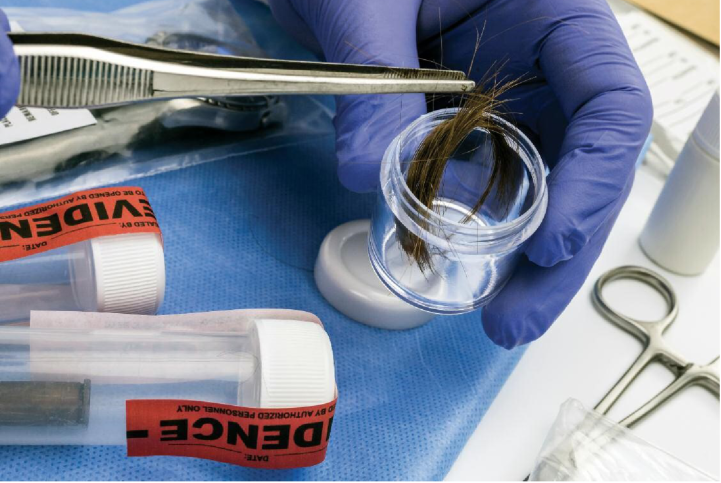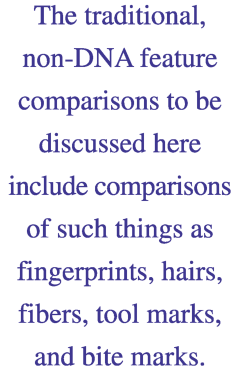Assessing Reliability of Non-dna Forensic Feature-comparison Evidence in Alabama
| Publication year | 2020 |
| Pages | 0357 |

Five years ago, on the heels of admitting that its latent print unit incorrectly identified an Oregon lawyer as the Madrid train bomber, the Federal Bureau of Investigation disclosed yet another disconcerting forensic failure.1 Testimony given by that agency's forensic hair examiners in criminal trials had included "erroneous statements" at least 90 percent of the time.2 While shocking, the case review which exposed the erroneous hair comparison testimony is only a small part of a much larger reckoning currently taking place within the criminal justice system.
For several years now, a sea change has been occurring in our understanding of the reliability and the limitations of many common forensic techniques and methods routinely used in criminal trials. The watershed event in this change occurred in 2009 with the long-awaited release of a report by the National Academy of Sciences on the state of forensic science. Once released, the report proved to be "a thoughtful, but devastating critique of the practice of forensic science in the criminal courts of the United States."3 The importance of this report cannot be overstated. It has been said that it "fundamentally altered the landscape for forensic science in the criminal justice system."4
Despite this fundamental alteration, the broader legal community has been widely criticized for failing to recognize and respond adequately to the use of forensic evidence that has proven to be wholly unreliable in some cases or of limited probative value in others. One commentator has bluntly expressed that:
Despite the advancement in forensic disciplines and research a significant obstruction remains to restoring reliability in our criminal justice system: the courts. Judges, defense attorneys, and prosecutors continue to misuse, mishandle, and misrepresent forensic findings with impunity. Unfortunately, the wave of reform attendant to the forensic sciences seems to have eluded lawyers.5
Whether such criticism is warranted can be debated, but it is true that ignoring or downplaying the extent and significance of the limitations of forensic evidence has caused incalculable harm to innocent people accused of crimes as well as to victims and to the families of victims of those crimes.
To put the terms "forensic science" and "forensic evidence" in proper perspective, it is important to remember that forensics is a patchwork of disciplines with diverse areas of practice, interest, methodologies, and techniques. Although there can be some overlap, the individual disciplines can generally be thought of as falling into one of two categories. The first category includes those disciplines that are laboratory based (e.g., nuclear and mitochondrial DNA analysis, toxicology, and drug analysis). Those laboratory-based disciplines involve the straight-forward application of basic science to the task at hand.

The second category is comprised of those disciplines that involve the interpretation of "observed patterns," also known as "feature-comparison."6 The feature-comparison disciplines are those "that attempt to determine whether an evidentiary sample (e.g., from a crime scene) is or is not associated with a potential "source" sample (e.g., from a suspect), based on the presence of similar patterns, impressions, or other features in the sample and the source."7 The traditional, non-DNA feature comparisons to be discussed here include comparisons of such things as fingerprints, hairs, fibers, tool marks, and bite marks.
Historically, testimony regarding the non-DNA feature comparisons by forensic scientists has been deemed admissible in Alabama provided that the witness is qualified and his or her testimony would assist the trier of fact.8 Because this type of testimony was considered simply the product of subjective observations and comparisons, there was generally no further inquiry into the actual reliability of the testimony. If the witness was qualified and the testimony would assist the trier of fact, the reliability of the evidence was effectively assumed based on nothing more than the ipse dixit of the expert.
Events which have transpired over the last several years have revealed that such assumptions of reliability are unfounded. The emergence of DNA profiling as a forensic discipline unmistakably introduced a powerful new tool into criminal investigations, but it also did much more than that. Post-conviction DNA analysis of crime scene samples that had been collected before the advent of DNA profiling quickly began exposing erroneous convictions that had occurred from using unreliable forensic evidence at trial, while very often implicating the actual perpetrator.
The second thing that came out of DNA profiling as a forensic tool was the exposure of forensic scientists to "a model for a scientifically sound identification science."9 Whereas the traditional disciplines had historically rested upon assumptions of validity, DNA injected into the field of forensics a science-based model for examining and processing physical evidence and for reaching valid conclusions regarding that evidence. The juxtaposition of the methods and techniques of those traditional disciplines against the scientific model exemplified by DNA exposed fatal weaknesses in the theories, reasoning, and underlying assumptions of many of the traditional forensic identification (feature comparison) disciplines. It has been said that, "From the viewpoint of conventional science, the forensic identification sciences are contenders for being the shoddiest science offered to the courts."10
The problem with the feature-comparison techniques is that they have historically relied upon an assumption of "discernable uniqueness."11 When the DNA "model for a scientifically sound identification science" was applied to the traditional identification disciplines, it revealed why there were so many actual innocence exonerations taking place.12 The "assumption of discernible uniqueness" combined with expressions of "bold, definitive conclusions" by forensic scientists lacked "theoretical or empirical foundations."13 "When defendants convicted with the help of forensic evidence from those traditional disciplines began to be exonerated on the basis of persuasive DNA comparisons deeper inquiry into scientific validity began."14
In 2005, Congress directed the U.S. Attorney General to provide funds for the National Academy of Sciences (The Academy) to assess and make recommendations for the future of forensic sciences.15 In 2009, the Academy issued its report, "Strengthening Forensic Science in the United States: A Path Forward" (the NAS Report).16 In addition to providing a broad overview of forensics in general, the NAS report also looked at several specific forensic disciplines and provided a critique of their "reliability and precision of results-attributes that factor into probative value and admissibility decisions."17 Although the committee discussed a wide range of forensic disciplines, the most serious criticisms were leveled at the traditional feature-comparison disciplines. Among its many damning conclusions was that other than DNA, "no forensic method has been rigorously shown to have the capacity to consistently, and with a high degree of certainty, demonstrate a connection between evidence and a specific individual or source."18
Following the NAS report, the President's Counsel of Advisors on Science and Technology (PCAST)19 was asked to address the problems revealed in that report and to determine how to "help ensure the validity of forensic evidence used in the Nation's legal system."20 In 2016, the PCAST issued what amounts to a follow-up report to the NAS Report, "Forensic Science in Criminal Courts: Ensuring Scientific Validity of Feature-Comparison Methods." That report confirms the problems with many of the forensic disciplines that were exposed by the Academy in the NAS Report.
More importantly, the PCAST Report clarified the appropriate standards for the validity and reliability of forensic feature comparison methods. It then went on to apply those standards in an evaluation of the validity and reliability of several specific forensic disciplines in widespread use today. This established a benchmark for the state of the disciplines addressed in that report as of the time of the report. By outlining the proper standards and how to apply them, the report provides a simple roadmap for continuing evaluations on a case-by-case basis.
This is important because forensics is not static. Each discipline must undergo continuing scrutiny to evaluate its reliability in the context of the best available information and knowledge at the time of its proposed use. Disciplines that lack validity today might improve over time and become able to produce reliable evidence later. Conversely, others may eventually reveal themselves to simply be "junk science."
Bullet lead...
To continue reading
Request your trial
